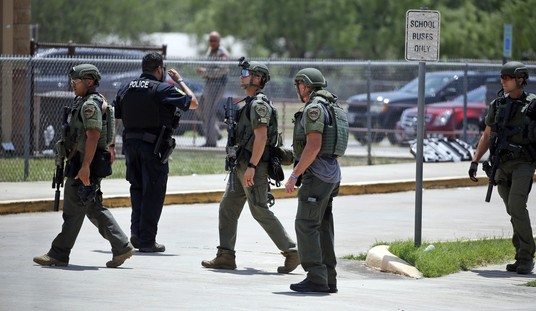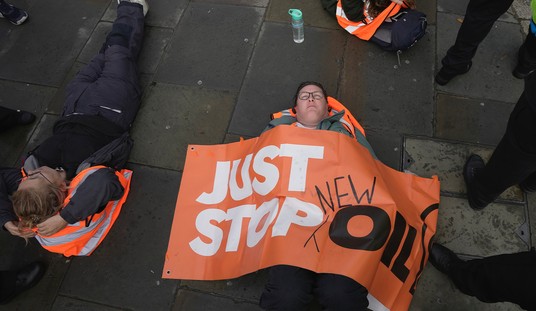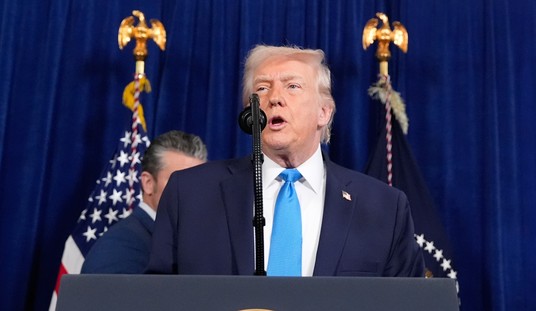Nick Miroff is the immigration reporter for the Washington Post who has recently written a number of reports about the crisis at the border. Today, Andrew Sullivan released a lengthy interview with Miroff in which they discuss the immigration system as it exists and how it has developed over the past few years in particular.
What’s noteworthy about the interview is how free it is of the usual partisan cant and intentional obfuscation that often surrounds this issue. Sullivan and Miroff don’t leave out the parts of this story that fail to serve the existing narrative. For instance, it’s relatively rare these days that you’ll hear a reporter saying what seems obvious: The current surge has a lot to do with perceptions about the Biden administration’s changing stance on immigration.
“Any presidential transition is a time of very great sensitivity at the border when people have a perception that something has changed,” Miroff said. He continued, “We saw that when Trump got in, the number of border crossings plummeted in those first few months even though he had barely done anything, just based on the perception that he was going to be tough. And then once people realized that nothing had really changed the numbers began to go up again.
“The opposite has happened with Biden. He came in, he made a bunch of moves that I think reinforced the perception that things were open. The coyotes, the smugglers were telling people there’s been a big change, Trump is gone, things are open now. All of it has combined into a kind of perfect storm that they are going to have a very hard time getting under control.”
Another simple truth that comes through in this exchange is that the recent shift to large numbers of unaccompanied minors and families is not simply because of factors pushing people out of Central American, in fact part of the reason is that a judge in California issued a ruling that changed the incentives.
“The big change came in 2015…when a judge in California determined it applied not only to unaccompanied minors but to children arriving with parents…So it meant that if you were an adult arriving with a child you would be virtually assured you’d be able to avoid detention and a quick deportation,” Miroff said.
“So it kind of encouraged people to come with their kids,” Sullivan said.
Miroff added, “And that was reinforced by a pricing scheme in Central America, offered by smugglers, which was that it would be cheaper to go to the United States with a child than as a single adult.
“And why? Well, that’s because if you are trying to go to the United States as a single adult, say to get to Houston then there would be one price because they would have to sneak you over the border past the border patrol and deliver you to Houston. But if you’re arriving with a child, if you’re traveling with a child you merely have to arrive at the border and surrender to the border patrol and you’d be assured to be released. So there was a built in financial incentive for this.”
There’s a long section about midway into the discussion about the development of the asylum system itself and how it is currently being misused by people, most of whom do not qualify because they aren’t facing the kind of government persecution back home the system was intended to prevent.
“You see what looks to me like a slightly expedited form of economic migration,” Sullivan said. And here again, this is one of those issues that national media reports often seem to gloss over, i.e. are the people claiming asylum by the hundreds actually eligible or are they trying to game the system? In this next clip, Miroff points out that Central America is not an undifferentiated place of violence. Many of the people coming are coming because they and their kids could have a better life here, not because they are in danger of persecution.
A hashing out of the immigration question with one of the best reporters on the question, Nick Miroff. I hope you find it as enlightening as I did.https://t.co/2MTzmOFrgh
— Andrew Sullivan (@sullydish) April 9, 2021
And once you get in, however you get in, your chances of being asked to leave are tiny. This comes from earlier in the discussion but logically this is the endgame. Once you make it to the interior of the U.S. you have about a 95% chance of never having to leave. In fact, we’re to the point now where progressive cities have made it illegal to even hold people who’ve been arrested for serious crimes so they can be deported. That’s what the sanctuary city policies are about. So it’s really no wonder that we’re facing a huge wave of migrants every couple years. They know better than many Americans do that the system is broken and that once you’re in, you’re probably in for good.
Does anyone in the country illegally actually get deported? Not really. https://t.co/3mkOoWDoZW
— Andrew Sullivan (@sullydish) April 9, 2021








Join the conversation as a VIP Member